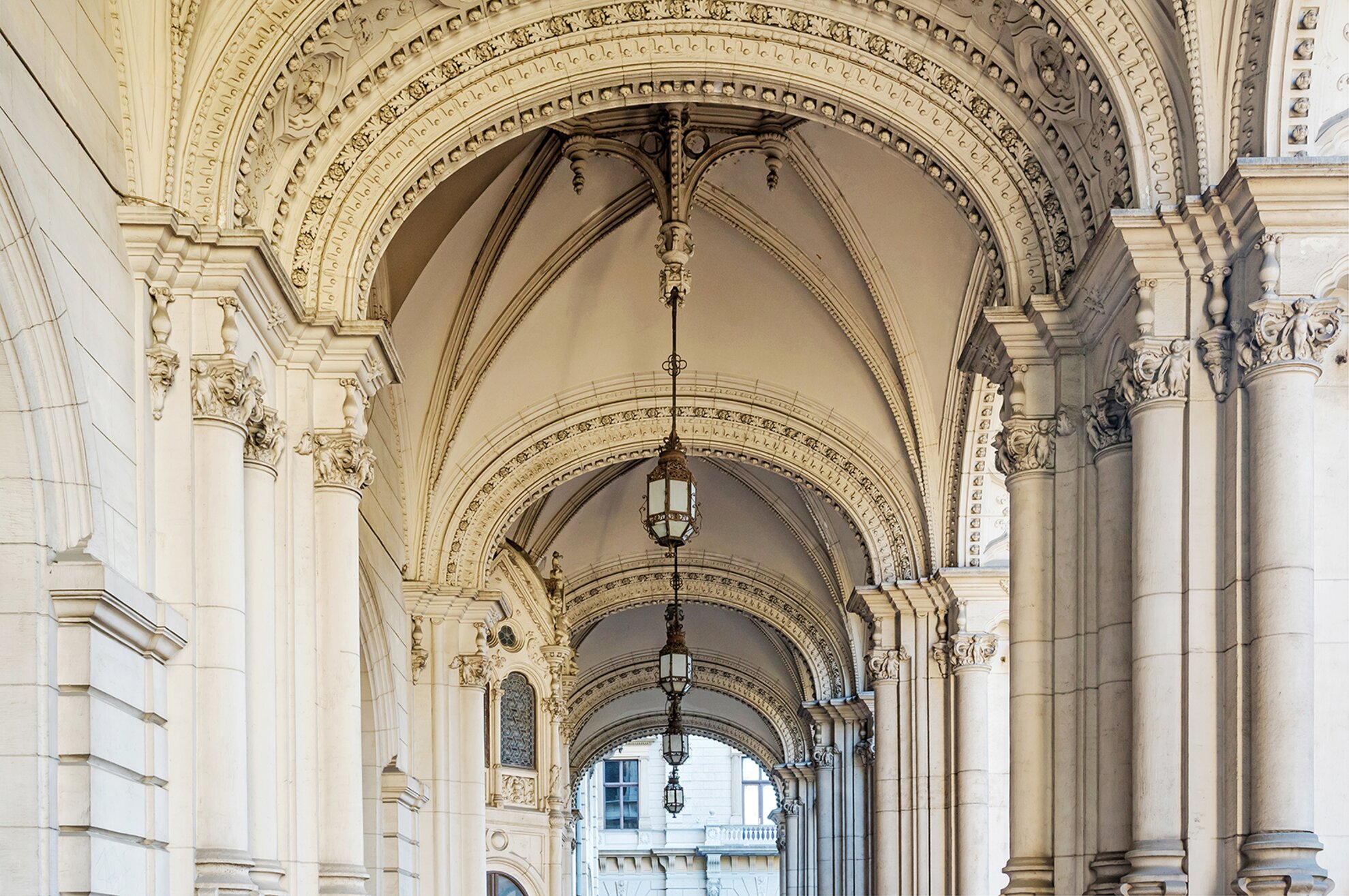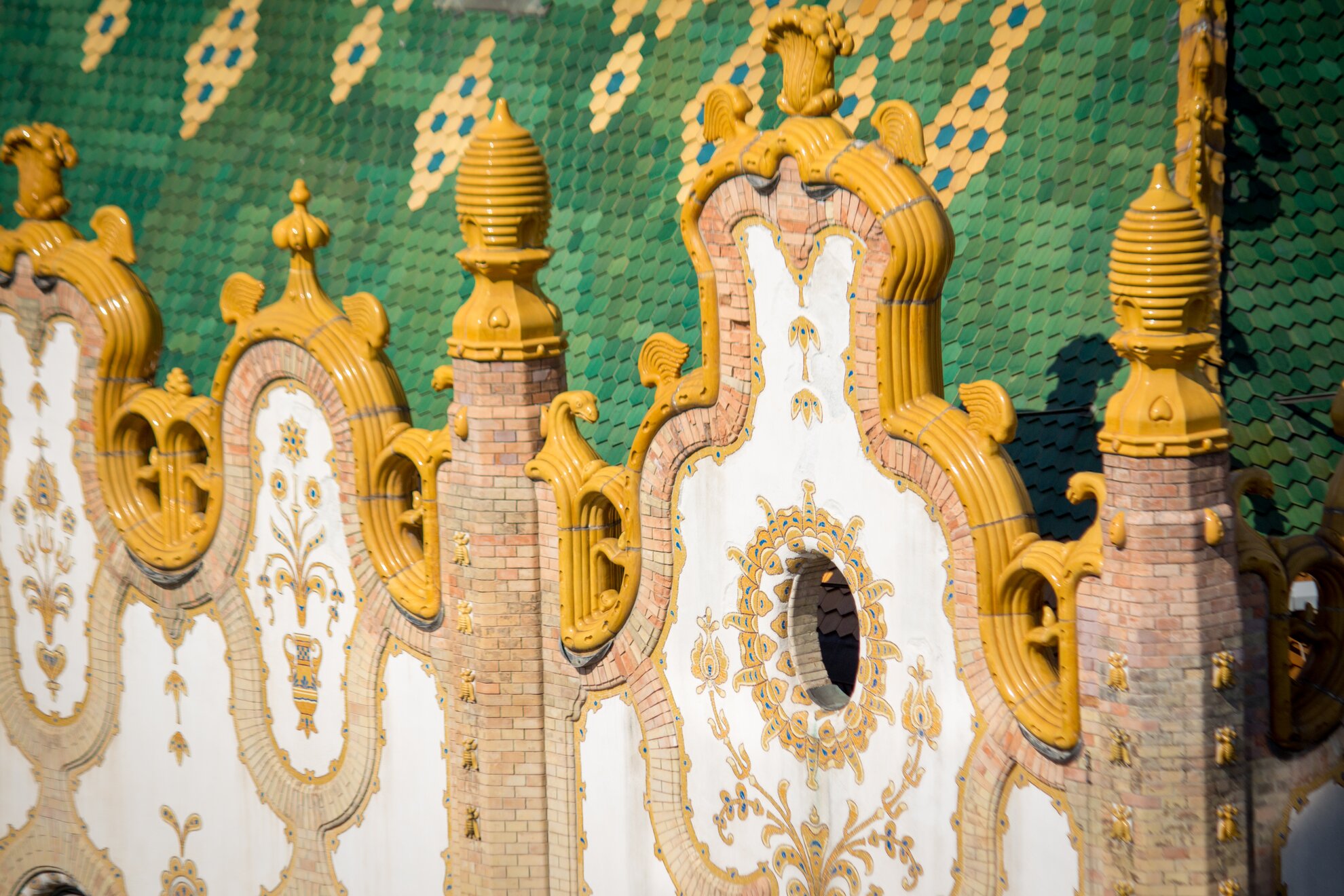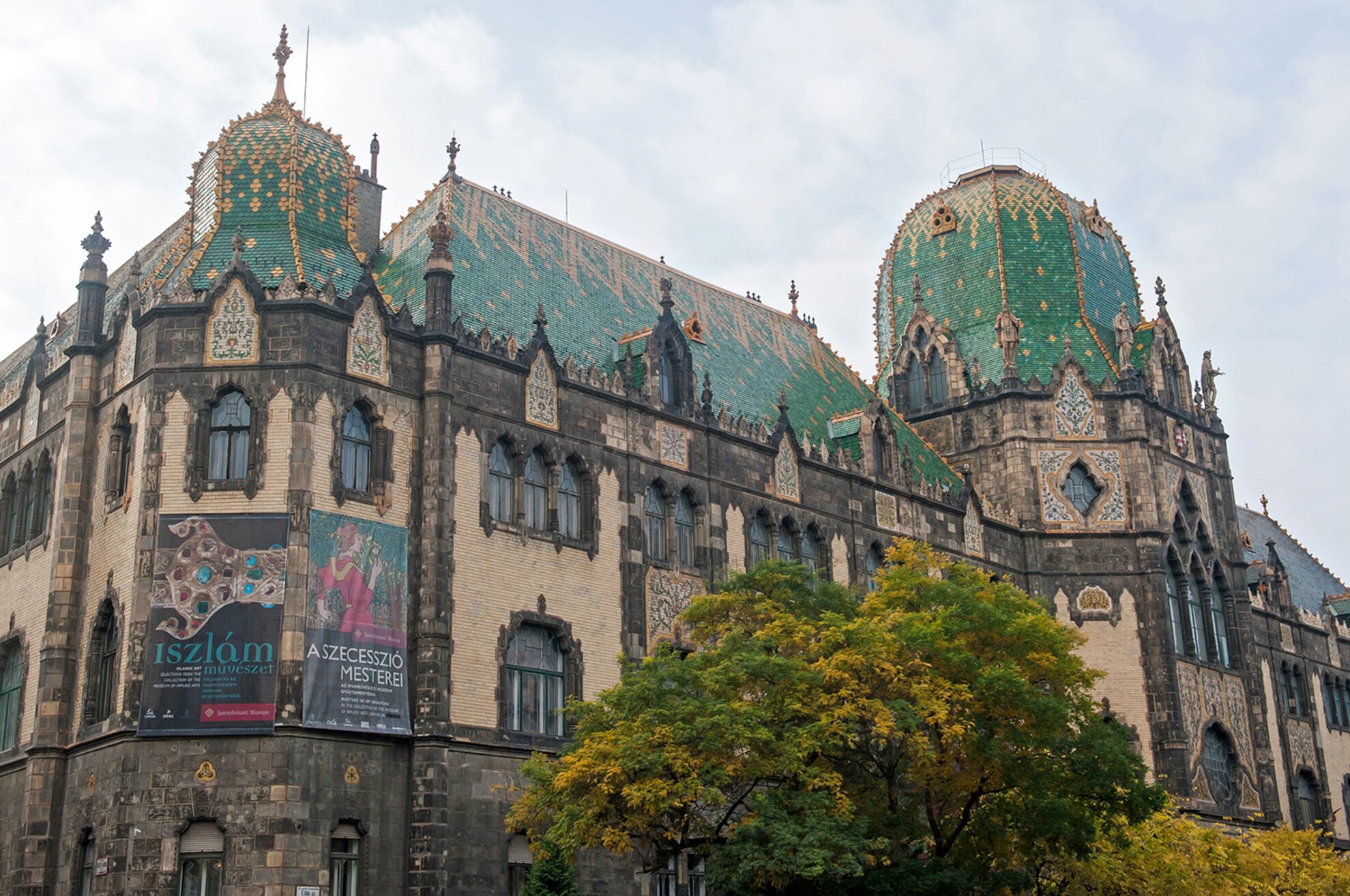
Stop any local on the street, ask them to name three Hungarian
architects and Ödön Lechner is bound to be on the list. He takes his place
alongside Alajos Hauszmann and Miklós Ybl as a genius of Magyar architecture, and it is he alone who helped the whole country embrace that special brand of Hungarian Art Nouveau known here as Szecesszió.
Walking around Budapest,
his buildings grab the eye – and the imagination – and nearly convince us that we
are in a magical world, rather than a major metropolis. This feeling of being
in a folk tale is not accidental – much of Lechner’s designs drew specifically
from Hungary’s rich folk traditions, bringing the romance of old stories to
reality.

Ödön Lechner came from a bourgeois family in Pest, whose connection to art and architecture went all the way back to his grandfather’s involvement with the Szépítő Bizottmány, the Beautification Committee. Lechner grew up around his father’s brickwork factory in Kőbánya, where he became deeply interested in the creation of fine ceramics.
Colourful beginnings
“In
this factory, I learned to use clay from an early age and fell in love with
different techniques of ceramics. Because the factory produced not only
ordinary bricks, but also finer ceramics, including all the terracotta and
glazed majolica elements used for the Budapest Synagogue designed by the Viennese
architect Förster. From that time on, under my leadership, we have
carried out many experiments in the field of ceramics,” wrote Lechner in his
1911 CV.

Like
his contemporaries, Lechner studied at the József Ipartanoda – today the Technical
University. Upon graduation, in keeping with the custom of the age, Lechner
embarked on extensive educational trips abroad, attending lectures on new
building materials, iron support structures and other such innovative
technologies at the Berlin Academy of Architecture, along with Alajos Hauszmann
and Gyula Pártos.
When the three young men returned home, Lechner and Pártos
set up a design office together, focusing in the beginning on tenement houses
in the fashionable styles of Gothic, Renaissance and Baroque.
They
found success, designing as their first major work the headquarters of the MÁV
Pension Institute, better known as the Dreschler Palace or Ballet Institute.
The building was erected in 1883 oppose the Opera House, and this early design
shows little of the flair and exuberance which would come to dominate Lechner’s
style.
Instead, we see a construction typical of castle architecture, and
this is the result of an unhappy event in Lechner’s life. His wife of six years
died suddenly, and the grieving widower left the country for four years to
study at Clément Parent's studio in France, where he spent most of his time
restoring monuments. Upon his return, he integrated these French styles into his
own work.

As
Lechner’s career progressed, so did his successes. He competed in more than 30
competitions – most of which he won – and for a time he was given many
state assignments. Through these commissions, his use of ceramics began to
take on the organic, folk-inspired forms which we recognise today.
This wasn’t
without significant trial and error, though: these shapes and techniques were
all new and unfamiliar to the workers, and the contributing stonemasons,
carpenters and locksmiths had to re-learn almost everything to accommodate
Lechner’s whimsical, eccentric ideas.

The leading producer of ceramic tiles at the time was Vilmos Zsolnay in Pécs and, together with Lechner, they changed the skyline of the Hungarian capital. Being non-porous, the tiles retained their vibrant colour despite city pollution, which aided Lechner in crafting the brilliant yellow-and-green rooftop of the Postal Savings Bank – lined with accents of beehives – and the deep blue of the Geological Institute with its alternating pale-turquoise design which is easily spotted from a distance.
Today we can still certainly appreciate these materials. Walk down Rákóczi út or the Grand Boulevard and the smog-choked buildings are a dull shadow of their former selves – but catch a glimpse of one of Lechner’s creations and we might imagine they were only built last week.

One
of Lechner’s greatest interests was in creating a uniquely Hungarian design
style. Such was his renown that many disciples hung on
every word of the great architect, copying his style in their own constructions
and preaching the gospel of Art Nouveau.
Ultimately, thought, the revolution was
not to be. In 1903, an application signed by architects, painters, writers
and sculptors was sent to the Minister of Public Education, beseeching that Lechner be
allowed to establish a master school. This was then rejected.
Lechner’s works finally culminated in the Museum of Applied Arts, his most ambitious undertaking. The overflowing use of Zsolnay tiles, the extravagant, whimsical designs and the shock of colour were not well received by his contemporaries. Given nicknames like 'the Gypsy Emperor’s Palace' and 'the potter master’s creation', it was largely seen as a waste of State money and regarded with professional disdain by a trade seemingly unwilling to innovate. From that point on, the great Ödön Lechner would not receive another forint from State commissions.

Today, Lechner’s works are regarded as absolute mastery but, as is often the case with artistic pioneers, this may be because we are a future generation admiring the works of a man who could see beyond the confines of his own time. Were Lechner alive today, this gentle soul would finally get to see his creations revered for the national treasures they later became.






